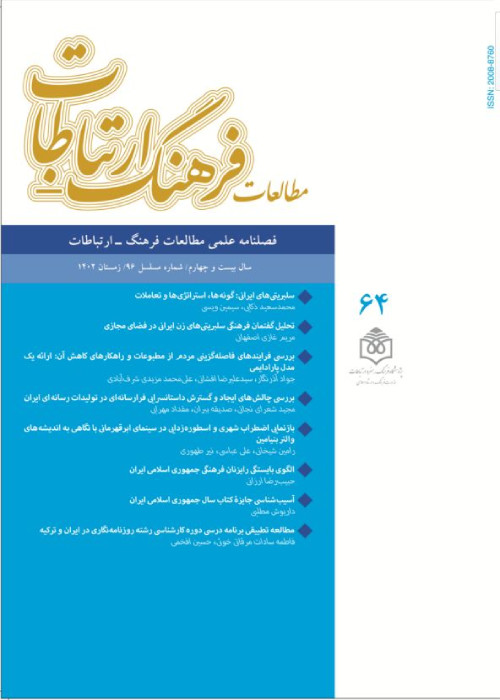Elf and Fairy Myth in Khorasan Poetic Oral Literature
Author(s):
Abstract:
Researching on public culture or folklores is a measure to learn about the beliefs, traditions and myths of the people of old times and may be useful in self-cognition, self-confidence and eventually, identity achievement of the contemporary generation. A major part of society’s culture is represented in its oral literature. Therefore, such type of literature is extraordinarily along with the level of dreams, economy and beliefs of the public. Oral literature has unknown authors, but known narrators and in terms of contents, it includes perished or inaccessible dreams and expectations, myths, and individual and group beliefs of the people of the past, while some of these myths and beliefs are associated to supernatural creatures such as elf and fairy. When the mankind in the past failed to find a logical answer and in proportion to his/her knowledge, experience and expectations from his/her surrounding phenomena, (s)he was surprised and therefore started making imagination and fantasy and created supernatural and mythical creatures and attributing several issues to them, through which (s)he answered his realistic questions using fantasy responses and therefore mentally persuaded himself/herself. Khorasanian oral literature, which manifests these issues, has been sometimes in prose, and within the framework of stories and fictions, narrations, mazes, proverbs and sometimes as poems and been expressed in the form of masnavi, part, sonnets, couplets, quatrains, materia, etc. In this brief work, the author strives to study elf and fairy in poetic oral literature (lullaby, couplets, quatrains, etc.) of Khorasan. In other words, in this research article we are trying to find out that in which part of Khorasan poetic oral literature, elf and fairy are more manifested and emerged and how is the emergence of these creatures in different frameworks? Examining, studying and researching on public culture and oral literature are a measure to recognize the ancestors and take benefit from their minds and language for a better life. In order to collect the data of this article, 2,007 couplets, 675 quatrains, 954 lullaby, 186 mazes and roughly 3,000 poetic proverbs have been studied, after which it should eventually be specified that these creatures have been created to meet the needs of humans. They have some similar entities in the other culture and some of them are embedded in the public beliefs, and sometimes they have a masculine creation.
Keywords:
Language:
Persian
Published:
Journal of Culture - Communication Studies, Volume:16 Issue: 30, 2015
Page:
41
magiran.com/p1469944
دانلود و مطالعه متن این مقاله با یکی از روشهای زیر امکان پذیر است:
اشتراک شخصی
با عضویت و پرداخت آنلاین حق اشتراک یکساله به مبلغ 1,390,000ريال میتوانید 70 عنوان مطلب دانلود کنید!
اشتراک سازمانی
به کتابخانه دانشگاه یا محل کار خود پیشنهاد کنید تا اشتراک سازمانی این پایگاه را برای دسترسی نامحدود همه کاربران به متن مطالب تهیه نمایند!
توجه!
- حق عضویت دریافتی صرف حمایت از نشریات عضو و نگهداری، تکمیل و توسعه مگیران میشود.
- پرداخت حق اشتراک و دانلود مقالات اجازه بازنشر آن در سایر رسانههای چاپی و دیجیتال را به کاربر نمیدهد.
In order to view content subscription is required
Personal subscription
Subscribe magiran.com for 70 € euros via PayPal and download 70 articles during a year.
Organization subscription
Please contact us to subscribe your university or library for unlimited access!


